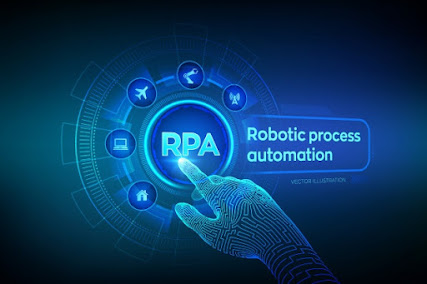What are the Essentials of Robotic Process Automation(RPA)?
The present associations utilize a wide assortment of business applications. At the point when a heritage stage, web application, or in-house framework needs undertaking reconciliation usefulness, almost certainly, representatives need to accomplish manual work to keep data and content moving between frameworks as a component of a business process. These manual strides in mechanized processes are now and again called “automation holes”.
RPA bots work straightforwardly from an application’s UI, imitating human activities, remembering logging for and out, reordering information, opening messages and connections and rounding out structures. As they can carry on like a human, while as yet working with speed, proficiency and an absence of human intercession, these bots are especially fit to fill automation holes in business processes.
While this usefulness might sound like screen-scratching or application macros, RPA has advanced past these arrangements. For instance, while macros follow not really settled content of fixed, direct orders, bots have the adaptability to learn after some time and instinctively react to changes in business processes. Likewise, in situations where you need different instruments to run scripts for every business application, RPA can work on the manner in which clients robotize undertakings by connecting with various applications without a moment’s delay.
The powerful idea of robotic process automation makes it ideal for associations that need to convey mixes and automation arrangements rapidly in light of a need or a changing business environment.
Advantages of robotic process automation (RPA):
As an easy to use and practical device, robotic process automation gives various benefits that are drawing interest from associations across ventures.
The business advantages of RPA include:
Low specialized obstructions: Programming abilities are not important to design a bot. Non-specialized staff can utilize a process recorder element to show the bot how to play out a formerly manual advance in a robotized business process, and incorporate the bot-based automation into a bigger computerized work process utilizing an intuitive process fashioner or comparable apparatus.
Expanded precision: Like many devices accessible as a component of a process automation suite, bots are incredibly exact and reliable — they are substantially less inclined to committing errors or grammatical mistakes than a human specialist. This can apply to normal processes, for example, setting up or eliminating client accounts, replicating data starting with one framework then onto the next, onboarding and off-boarding representatives or populating structures dependent on data from another framework.
Fulfill administrative consistence guidelines: Bots just adhere to the directions they have been arranged to follow and give a review trail history to each progression. The controlled idea of bots makes robotic process automation appropriate for associations that need to computerize their business processes start to finish while as yet satisfying severe consistence guidelines.
No interference of work: Bots can work eagerly work nonstop, independently without expecting representatives to re-enact them, permitting a more adaptable timetable for business processes.
Existing frameworks stay set up: Unlike conventional combinations that might require broad designer assets, RPA doesn’t need any progressions to the frameworks you as of now utilize each day to be incorporated as a component of your computerized business processes. Bots work straightforwardly from a UI, similarly as an individual would. This makes robotic process automation particularly valuable for incorporating heritage frameworks, where APIs may not be quickly accessible, or in circumstances where associations don’t have the opportunity or representative assets to foster custom code-based combinations.
Further developed worker spirit and representative experience: By using robotic process automation as a feature of their automation tooklkit, associations can open up additional chances for representatives to commit a greater amount of their time and ability to other work. While bots round out structures, enter information and look into data from sites, representatives can zero in on high-sway projects that further drive development.
Expanded usefulness: process durations are more proficient and can be finished at a quicker speed contrasted with manual processes


Comments
Post a Comment